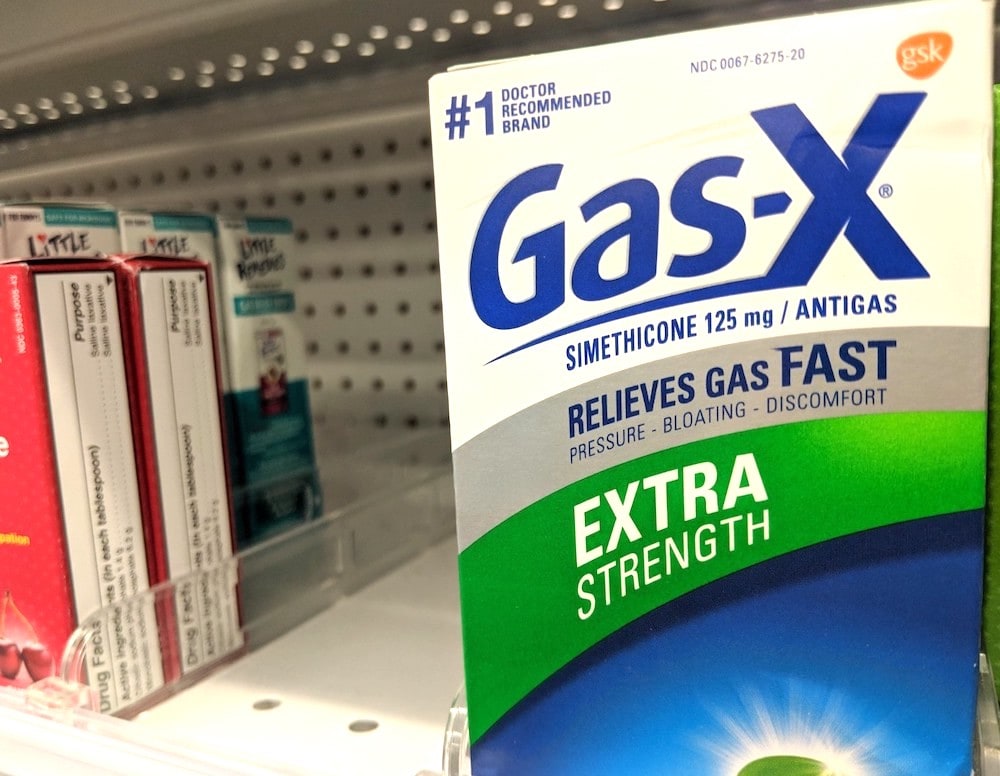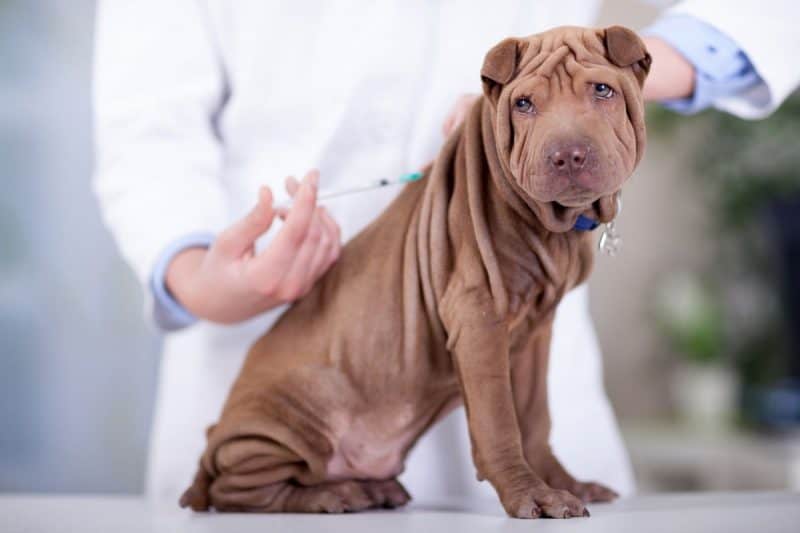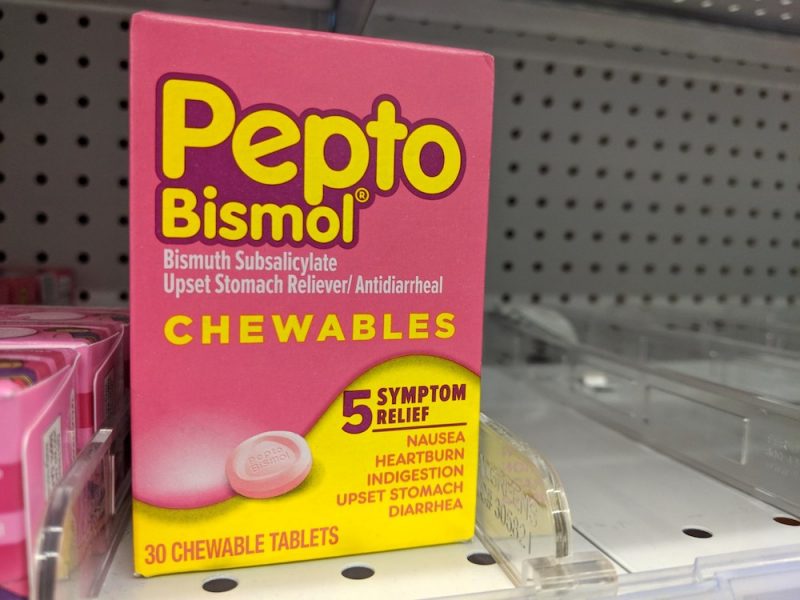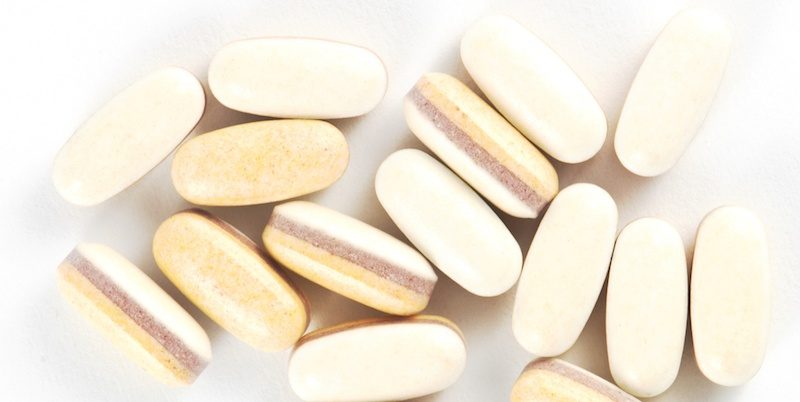Just like humans, dogs can and do suffer from gas on occasion – and it can be quite deadly as well as silent.
While this is a harmless (if unpleasant) medical issue that usually resolves on its own (or with the help of a fan), there are a few things you can do to help speed along the airing out process. This can help spare your pup some potentially painful gas pains and help everyone retain their sense of smell.
The good news is: Yes! You can give your dog Gas-X.
Simethicone, better known by the brand name Gas-X, is generally considered safe for dogs (although as always, you should make sure to consult your vet before administering any kind of medication).
Wondering where to get it? You can grab Gas-X on Amazon!
What Causes Gas in Dogs?
There are a number of different things that can cause your dog to suffer from gas. Some of the most common include:
- Excessive Air Consumption – Many times, the gas inside your dog’s belly is simply air. This type of dog gas rarely has a particularly foul odor (air smells like, well, air), but it can still cause them to suffer from the accompanying discomfort. Most particularly gassy dogs end up swallowing excess air by gulping down their food and water too quickly. You may even hear your dog’s stomach making noise and strange sounds!
- Cruciferous Vegetables and Other Foods – The compounds found in some foods, particularly cruciferous vegetables (cauliflower, broccoli and their relatives), naturally produce gases when they breakdown. Extremely rich foods may also cause gas, so avoid giving your dog fatty table scraps.
- Gastrointestinal Infections – Bacterial infections may upset the normal digestive processes in your dog’s gut, leading to the formation of more gas. Some such infections may be self-limiting and resolve on their own, but others will require antibiotics to clear. Consult with your vet if you suspect your pup has contracted a bug – particularly if the gas is accompanied by loose or watery stools.
- Gastrointestinal Malformations – Although they are relatively rare, congenital defects of the digestive system may lead to poor digestive function. This dysfunction may manifest as copious quantities of gas.
Some dogs may also experience gas if they’re given low-quality foods or those with excessive fiber content.
Check out some of the best low-fiber dog foods around!
What Is Gas-X and How Does It Work?
Simethicone (aka Gas-X) works in a fairly simple and straight-forward manner, but it doesn’t do what a lot of people think it does. In fact, simethicone isn’t even absorbed by the bloodstream at all – it simply passes through the piping.

Simethicone does not stop gas bubbles from forming, nor does it eliminate these bubbles, once they’ve formed.
As explained by the University of Michigan:
“Simethicone allows gas bubbles in the stomach and intestines to come together more easily, which allows for easier passage of gas.”
And unfortunately, no, it doesn’t do anything to improve the odor of said bubbles either.
The gas will still need to escape from your dog’s body one way or another. Simethicone simply helps accelerate this process. By hastening the exit of the gas, your dog will feel less bloated and more comfortable.
In other words, simethicone accelerates the expulsion of gas by reducing the surface tension of the gas bubbles.
Think of it this way: The gas bubbles that form in your dog’s digestive system are typically rather small. This prevents them from moving through the intestines efficiently. They eventually make their way out, but it can take a considerable amount of time for this to happen.
But because simethicone lowers the surface tension of these bubbles, they readily combine with other small bubbles. The larger bubbles that result are propelled through the intestines more rapidly, which allows them to be expelled out more easily. Simethicone works rapidly, and the results can usually be seen (well, heard or smelled) within minutes.
Simethicone also has other uses too. For example, it can be used in the emergency treatment of detergent ingestion to help reduce the foaming that will otherwise occur.
What Is the Recommended Dosage of Gas-X?
Gas-X is not licensed for use in dogs, so you’ll always want to consult your vet before administering it to your dog. Nevertheless, the typical dosing regimen is as follows:
- Small dogs require about 20 milligrams
- Medium-sized dogs require about 40 milligrams
- Large dogs require about 80 milligrams
Note that simethicone is generally very safe, and it’s tolerated at even ridiculously high doses. Loose stools are usually the only side effect associated with high doses.
What Are Some Other Ways to Deal with Doggie Gas?
Although it is often quite effective, Gas-X isn’t the only way to treat your dog’s bloating and flatulence.
- Try to reduce the amount of air your dog swallows. Many dogs swallow air when gulping down their food, so try to slow the process down. You may also consider getting an elevated food dish or a slow-feeder, which may help reduce gassiness
- Try using probiotics to maintain a proper gut flora. Probiotics may help improve the efficiency of your dog’s digestive system and outcompete harmful (and potentially gas-producing) bacteria. However, be warned, some dogs appear to experience more gas on probiotics than they did before.
- Avoid providing your dog with food that causes gas. If your dog begins compromising the integrity of your home’s air after eating a given food, stop giving him that food. Usually, the foods that cause dogs to produce a lot of gas are vegetables, so they are relatively easy to replace. You may want to consider switching to a dog food for dogs with gas issues!
- Visit your veterinarian. You’ll likely need veterinary help to address gas caused by congenital disorders or illnesses like irritable bowel syndrome. He or she may be able to prescribe medications or prescription diets to fix the issue, or they may even recommend more elaborate procedures to fix more serious problems.
Emergency Use of Gas-X For Your Dog
Gas-X is typically used for eliminating minor bloating and gas, but it also has another important use. In fact, some veterinarians recommend keeping Gas-X on hand for emergency usage, specifically for dealing with bloat.
Bloat is a serious medical condition that occurs when gasses get trapped inside a dog’s digestive tract. Often, it is accompanied by a twisting of the stomach, which further locks the gases inside the body. Without immediate medical assistance, bloat is often fatal.
Treatment often requires surgery to untwist the digestive tract and free the trapped gas. However, some vets recommend giving dogs who may be suffering from bloat an immediate dose of Gas-X while on the way to the emergency clinic. The Gas-X may help some of the gas escape, and improve the chances of a full recovery.
When used in this manner, Gas-X is typically administered at double the normal dosage.
***
Do you use Gas-X to tame your dog’s gastrointestinal tract? Have you found other methods that work better? Perhaps you just try to tough it out and live with the chemical warfare your little tooter emits.
Regardless of your approach, we’d love to hear your thoughts in the comments below!














Leave a Comment